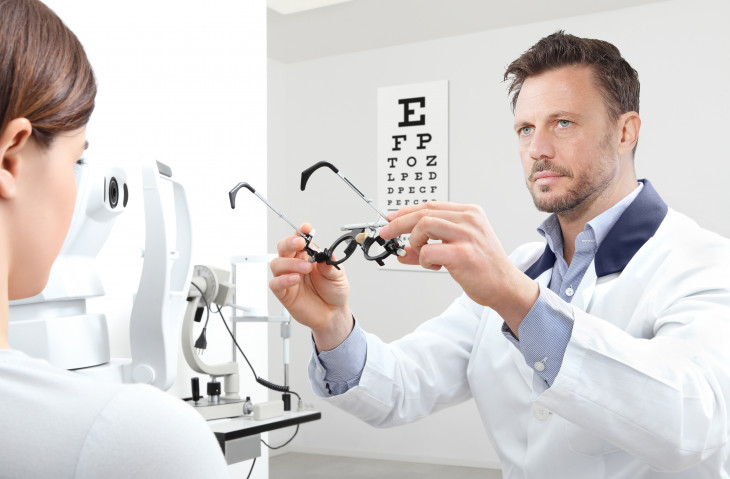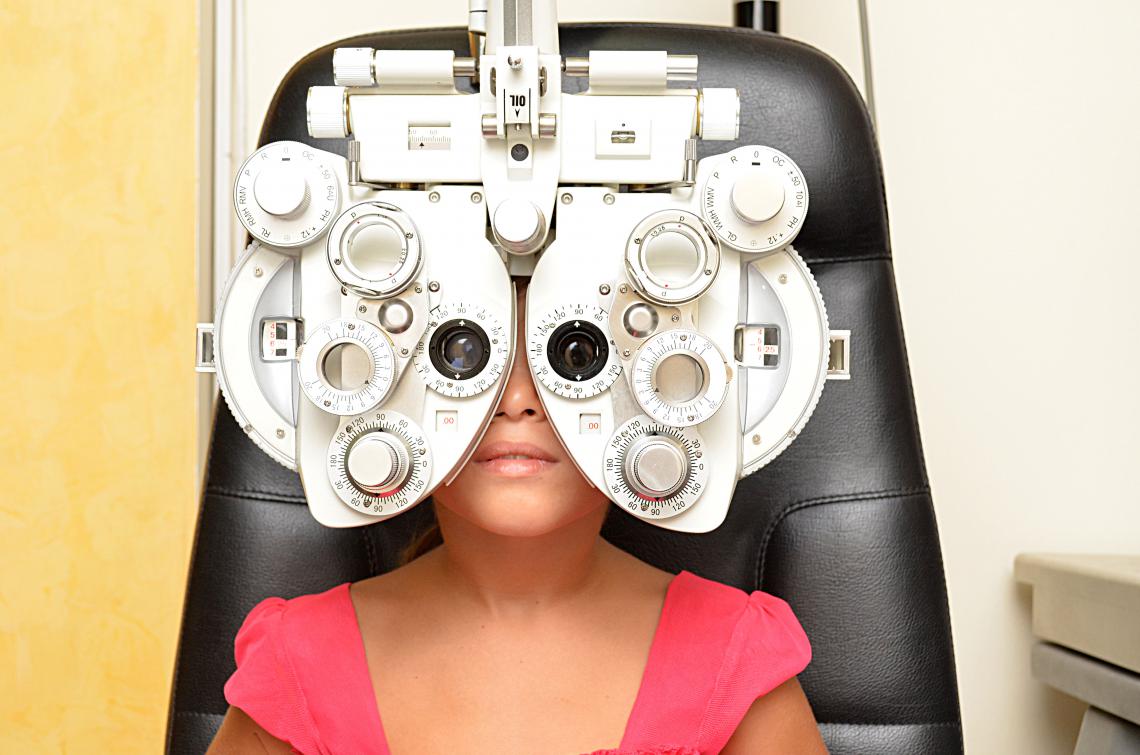Exploring the current Technological Developments in Optometry and What They Mean for Optometrists
From the precision of Optical Comprehensibility Tomography to the nuanced understandings supplied by AI-driven analysis tools, these technologies are setting brand-new requirements in individual evaluation and treatment. As these developments penetrate the technique, eye doctors are faced with the obstacle of embracing these tools to enhance person outcomes.
Developments in Diagnostic Equipment
Progressing the field of optometry, advancements in analysis devices have revolutionized the way eye care experts analyze and identify eye problems and aesthetic impairments. The past decade has experienced significant technical developments, making it possible for even more exact and detailed examinations. Optical Coherence Tomography (OCT), for example, offers high-resolution cross-sectional pictures of the retina, enabling the early discovery of conditions such as glaucoma and age-related macular deterioration. This non-invasive imaging strategy has actually ended up being indispensable in contemporary optometric practice.
An additional key advancement is the introduction of sophisticated corneal topography systems, which map the surface area curvature of the cornea with precision. These devices are particularly beneficial for fitting call lenses and diagnosing corneal disorders. Additionally, digital retinal imaging has transformed conventional ophthalmoscopy, using detailed, scenic sights of the retina that assist in thorough visual exams.
The development of wavefront aberrometry has likewise been critical, enabling the analysis of refractive mistakes with unparalleled precision (Eye Doctor). This modern technology assists in customizing corrective lenses and enhancing surgical results for refractive surgical treatments. Jointly, these diagnostic innovations empower eye doctors to supply exceptional person treatment, making certain very early treatment and customized therapy methods, eventually enhancing aesthetic wellness results
AI in Individual Management
Building on the foundation of cutting-edge analysis devices, the unification of artificial knowledge (AI) in individual monitoring stands for a transformative leap for optometry. AI systems are increasingly used to improve efficiency, precision, and customization in individual treatment. By examining large amounts of information, AI can recognize patterns and forecast prospective ocular problems, making it possible for eye doctors to tailor treatments a lot more properly. This ability is vital in handling chronic eye conditions such as glaucoma and diabetic person retinopathy, where early discovery and continual tracking are crucial.
Furthermore, AI-driven platforms assist in structured client communications and management procedures. Automated scheduling, digital appointments, and customized follow-up strategies not only enhance client fulfillment but likewise maximize time administration for specialists. These systems can triage people based on the urgency of their conditions, ensuring that those in critical requirement get timely focus.
Additionally, AI improves decision-making by supplying optometrists with evidence-based recommendations and treatment pathways. By incorporating data from electronic health and wellness records, AI devices provide insights that notify professional decisions, lowering the threat of mistakes and boosting client end results. As AI continues to develop, its function in person administration will likely broaden, reshaping the landscape of optometric care.
Breakthroughs in Retinal Imaging
In the world of optometry, retinal imaging has actually observed exceptional technical developments that are improving diagnostic capacities and individual care. Innovations such as Optical Comprehensibility Tomography (OCT) and fundus photography have reinvented exactly how eye doctors analyze the retina and imagine.
Enhanced imaging techniques like OCT angiography are additional refining diagnostic accuracy. This non-invasive strategy maps blood circulation in the retina, using critical understandings into vascular wellness without the requirement for dye shots. Additionally, flexible optics modern technology is being integrated right into retinal imaging systems to fix eye aberrations, providing unprecedented photo clarity. Such innovations help with the recognition of minute retinal adjustments that might symbolize disease development.
Furthermore, innovations in synthetic knowledge are boosting retinal imaging by enabling computerized analysis of big datasets. These systems anchor aid eye doctors in determining patterns a measure of pathology, therefore enhancing diagnostic accuracy and efficiency. Collectively, these advancements are changing retinal imaging into a keystone of modern eye care, improving results and increasing therapeutic possibilities.
Teleoptometry's Growing Duty
Teleoptometry is progressively coming to be a vital component of eye care, driven by improvements in electronic interaction and analysis devices. As optometry embraces digital change, teleoptometry helps with remote appointments, permitting eye doctors to expand their solutions past traditional boundaries. This is particularly useful in country and underserved locations where access to specialized eye care is typically restricted. By leveraging high-resolution video conferencing and advanced retinal imaging, eye doctors can perform extensive eye exams from afar, ensuring timely medical diagnosis and therapy.
The combination of man-made intelligence (AI) more enhances teleoptometry, enabling the evaluation of visual information and assisting in the discovery of ocular problems such as glaucoma and diabetic retinopathy. AI-powered formulas can swiftly analyze complex imaging information, supplying optometrists with beneficial understandings that strengthen scientific decision-making.
Additionally, teleoptometry supports connection of treatment through smooth integration with electronic health documents (EHRs), allowing eye doctors to maintain comprehensive patient histories. When consulting with various practitioners., this makes sure that people get personalized and consistent treatment also.
Despite these benefits, obstacles stay, consisting of ensuring data security and handling individual assumptions. Nevertheless, teleoptometry represents a considerable stride in the direction of even more accessible, reliable, and patient-centered eye treatment. As innovation progresses, its duty is positioned to increase better.

Future Fads in Eye Treatment
A myriad of ingenious patterns is established to improve the future of eye care, driven by technological innovations and the advancing needs of individuals. One substantial fad is the assimilation of expert system (AI) in diagnostics, which guarantees to official statement boost the accuracy and effectiveness of eye assessments. AI formulas can assess substantial quantities of data from retinal images, possibly detecting problems like diabetic person retinopathy and glaucoma earlier than traditional methods.
Moreover, customized medicine is getting grip in optometry, with genetic screening educating personalized treatment strategies. This method intends to maximize patient outcomes by customizing interventions to individual hereditary profiles. Wearable technology, such as smart contact lenses, is additionally on the horizon, offering real-time surveillance of intraocular pressure or glucose degrees, thus giving continuous insights into ocular and systemic health and wellness.
The fostering of augmented fact (AR) and virtual truth (VIRTUAL REALITY) in training and patient education is one more emerging trend. These technologies provide immersive experiences that can enhance understanding and skills both for patients and optometrists. As these trends evolve, optometrists need to remain abreast of technical innovations to provide sophisticated care, making sure enhanced individual end results and fulfillment in the vibrant landscape of eye treatment.
Conclusion

Collectively, these analysis innovations encourage eye doctors to supply premium individual home care, guaranteeing early treatment and tailored therapy methods, ultimately boosting visual health end results.

As these innovations proceed to develop, optometrists must adjust and incorporate them into technique, ultimately enhancing operations performance and elevating the requirement of eye treatment supplied to patients.
Comments on “Comprehending the Role of Your Eye Doctor in Maintaining Vision”